This World Youth Day, I went with a group of pilgrims that waved a pride flag amid a sea of nation flags. I was part of a group of eight people who went to Lisbon to represent DignityUSA, an organization that works for LGBTQ inclusion in the Catholic Church. We wore pride-themed sashes and handed out rainbow pins and prayer cards to pilgrims. Our purpose for being at World Youth Day was to be a visible, affirming, and encouraging presence for LGBTQ Catholics and allies from around the world.
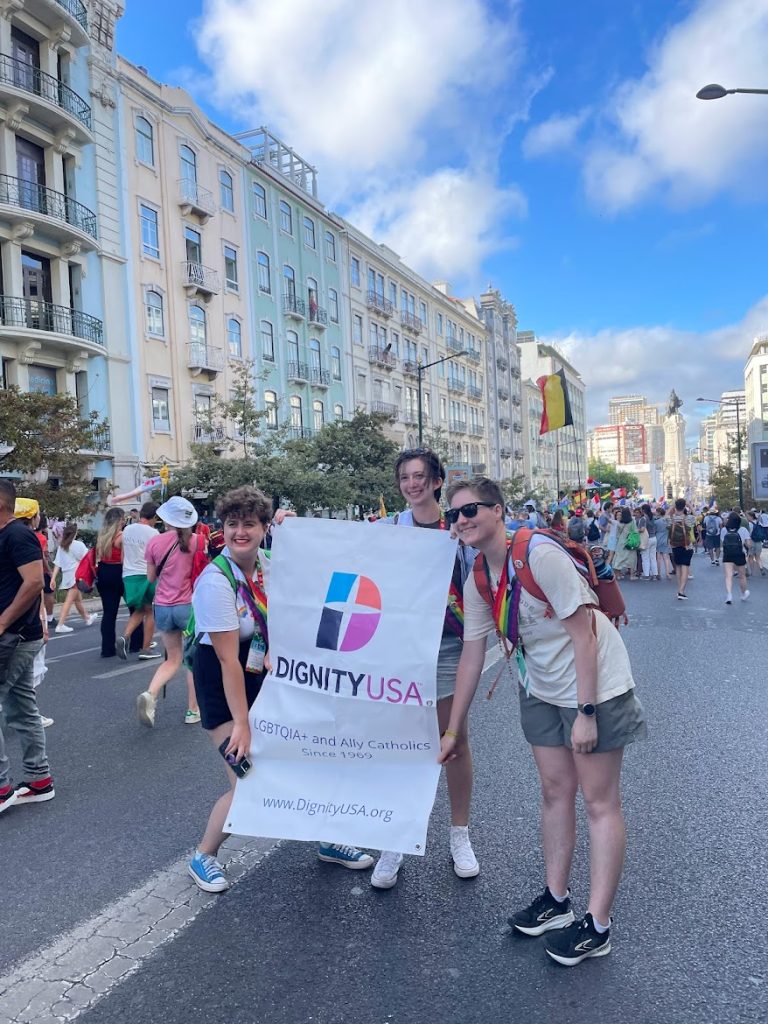
Most of the young Catholics we encountered were excited to see us and told us they want more LGBTQ inclusion in the church. Multiple people said that our presence helped them feel less alone, and we had a lot of groups wanting to take photos with us.
“This is the kingdom being built!” a French Canadian Catholic high school teacher said when he saw us at the opening Mass.
“It takes a lot of courage to do what you’re doing: Keep doing it. Thank you,” someone else said.
We got a variety of looks: Most were friendly and positive, some curious and unsure, some slightly hostile. Someone snatched one of my fellow pilgrim’s pride flags and ran away with it during the opening Mass. Luckily, he had packed another one, which we used for the rest of the week.
I was moved by the magnitude of World Youth Day, how energized and alive people seemed. I can see why young people want to experience a week such as this—it’s powerful to feel a sense of belonging to a rich tradition in an ancient city and have a common understanding across language barriers, which I felt even while carrying a pride flag.
The small moments of individual encounters proved why visibility, especially in church spaces, matters so much. It’s an act that makes ripples and plants seeds in people’s memories, imaginations, and hearts.
The Global Network of Rainbow Catholics (GNRC) organized the Rainbow Center at World Youth Day, which functioned as a small safe haven where we got to meet other LGBTQ Catholics and allies from all over—Slovakia, New Zealand, Spain, Portugal, Brazil, the UK, and more.
We met a group of Germans who started a campaign called Church for Every One, which advocates for women’s ordination and full LGBTQ inclusion in the church. We also heard talks from British priest Father James Alison that broke down the scripture verses some Christians use as a weapon against LGBTQ people (spoiler: they have nothing to do with “homosexuality”), and we watched a new documentary called LGBTQ+R(eligion) and did a Q&A with the directors. The Rainbow Center was one of my favorite parts of the week and reminded me that there are a lot of people doing good work; we are never alone in creating a more liberatory church.
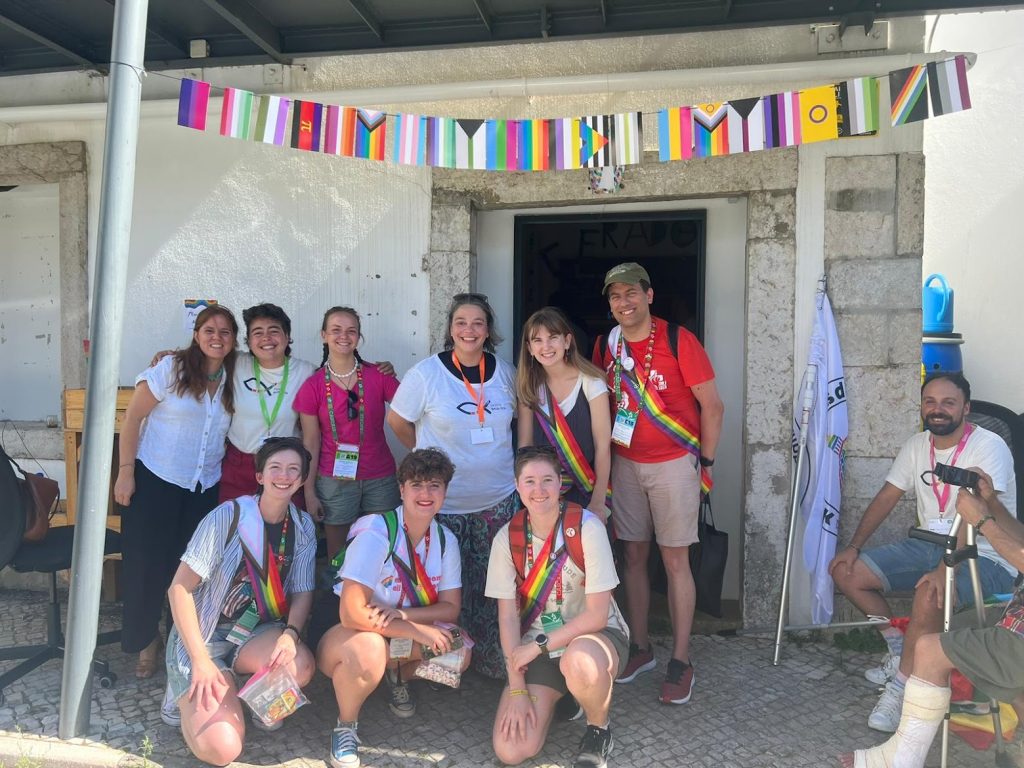
On day two of World Youth Day, we went to the English-language catechesis session at a neighborhood park in Lisbon. At each catechesis session, a bishop gave a talk, there was a Q&A with the bishop, and then Mass was celebrated. We stood near the back of the crowd in our rainbow sashes, and people came up to us to have conversations, take pictures, or get pins.
The conversations we had at catechesis were more in-depth, probably because we were around those whose primary language was English. Some teenagers came up to us who seemed to have been fed homophobic rhetoric, but they stayed long enough to have a nuanced conversation and ask questions. A person wearing a tie-dye shirt commemorating the 50th anniversary of Stonewall said, “I’m not alone!” when they saw us. I had a long and complex conversation with someone from Singapore who was genuinely curious about how I justify being a visible ally with church teaching and doctrine.
One of the pilgrims in the Dignity group, Carter, got in line to ask archbishop Anthony Fisher of Sydney, Australia a question. Carter talked about his experience as a trans man and being a new convert to Catholicism, and asked, “Is there a place for me in the church?”
The archbishop gave an expected answer: Everyone is a beloved child of God, and you are welcome in the church no matter what you are “struggling” with. What was unexpected, though, was that during Mass, a woman religious found our group in the back and said that the archbishop wanted to meet with us after Mass. We had no idea what this meant, so we prepared our talking points to focus on how queer identity and relationships are good and holy and help people grow closer to God.
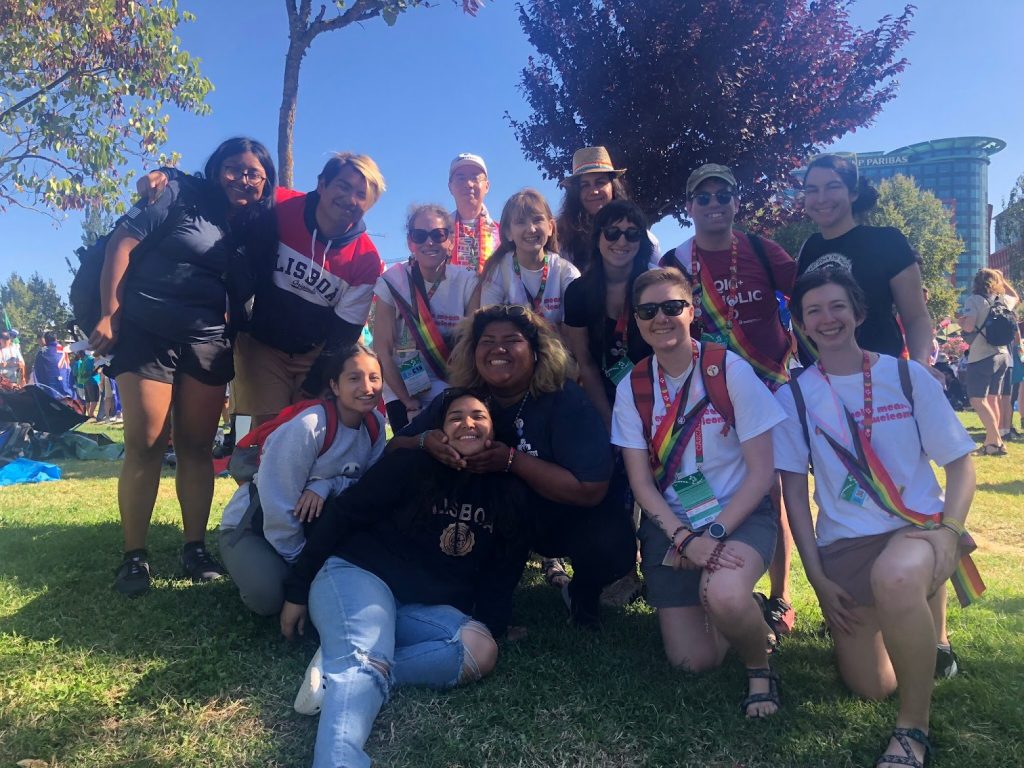
Going up for communion during Mass in our visible pride sashes felt vulnerable—Will I be denied communion? ran through my head. The priest whose line I was in didn’t really bat an eye when I went up, but other pilgrims had a eucharistic minister who saw their sashes and hesitated giving them communion, which for some was a lingering painful experience.
After Mass we made our way to Archbishop Fisher, who wanted to meet with our group simply to thank us for being there. He thanked Carter for his question and asked him, “Was my answer OK?” Fisher had more one-on-one conversation with Carter, took photos with us, heard more about our World Youth Day experiences, and blessed people’s rosaries and medals. I hope that meeting with us continues to inform him in his ministry.
At one point, as we were trying to catch a glimpse of Pope Francis at a neighborhood church, we ran into a photographer from the Associated Press who interviewed us and took photos of our group. The photo he took ended up in the Associated Press, the Washington Post, and the New York Times. I hope secular media will also see our visibility as an illustration that being queer and Catholic are not mutually exclusive.
The culmination of the week is the vigil, where pilgrims walk all day to a specified park to camp out for the night. The pope is there, and adoration happens in the evening with a closing Mass the next morning.
It was astounding—more people than I’ve ever seen in my entire life. Over 1.5 million people were at Parque Tejo in Lisbon. The highways near the park were blocked off, the overpasses flooded with pilgrims and locals. It almost felt apocalyptic walking on the highway with thousands of others carrying our plastic bags of food. The sun was setting, the sky streaked with pink and dotted with palm trees.
We finally got to our section after weaving through massive crowds. Pope Francis gave a talk on the jumbotron: “Joy is missionary!” he had everyone repeat. A man approached us and asked why we were wearing rainbow sashes. He said he was sitting next to someone who is in the LGBTQ community but didn’t feel safe enough to talk about it at World Youth Day. “That’s why we are doing this,” we told him. “For them and for everyone who feels afraid: That’s why we are being visible.”
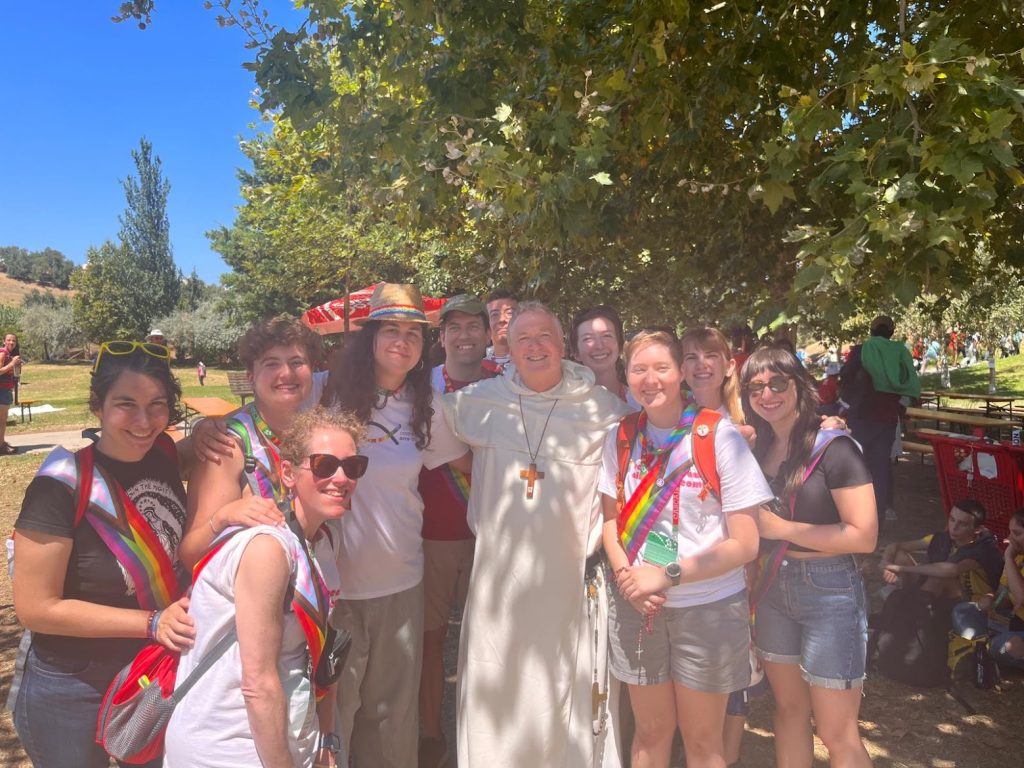
During adoration, a group of guys approached us multiple times, to the point where it felt threatening. We quickly decided to leave so things wouldn’t escalate. The crowds were kneeling and praying as we wove our way out of the park. It felt vulnerable, but I also felt that Jesus was really close to us, holding onto us as we were holding onto one another’s backpacks. “Blessed are you, reviled and persecuted, yet persistent in faith, hope and love,” is a line from the prayer cards we handed out to people.
Earlier in the week we visited the Museum Aljube Resistência e Liberdade, which is housed in a building that used to be a prison. It’s right next to the Lisbon Cathedral—through the iron-barred windows upstairs is a sweeping view of the church’s rose window with the ocean behind. The museum told the history of the fascist-oriented Portuguese dictatorship, Estado Novo, from 1933 to 1974 (the longest lasting dictatorship in Europe), the political prisoners the regime tortured, and the role that the Catholic Church played in the dictatorship’s identity.
During that time an underground movement of clandestine newspapers spread information about resistance movements, anti-colonialism, socialism, and workers’ rights. Portuguese poet Manuel Alegre, who was imprisoned, wrote: “Even on the saddest night . . . there is always someone who resists, there is always someone who says no.”
I was struck by the history of Portuguese resistance, of dangerously spreading messages of hope in dark times. Though our positive encounters far outweighed the negative, serious incidents happened to the LGBTQ community at World Youth Day—our group felt unsafe at the vigil, pilgrims representing GNRC were verbally attacked at the vigil, and protesters disrupted a Mass put on by the Rainbow Center. Even in the hard encounters we had I felt a deep sense of peace through it all, like God was with us.
My World Youth Day experience reminded me why I love being Catholic—why this identity, even though it’s complicated, means so much to me. I want to continue to commit to be visible in church spaces, carrying the bravery of Catholics throughout time, all over the world, who are witnesses to a different way, to a more loving church.
Images: Courtesy of Cassidy Klein


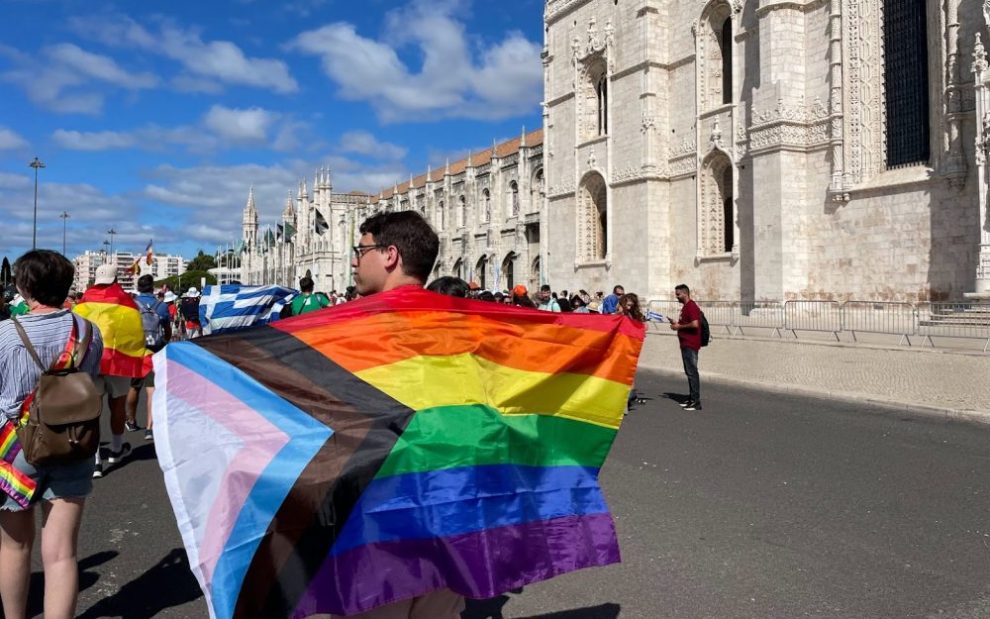


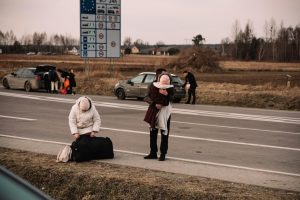
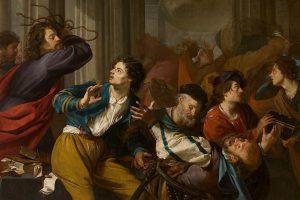







Add comment